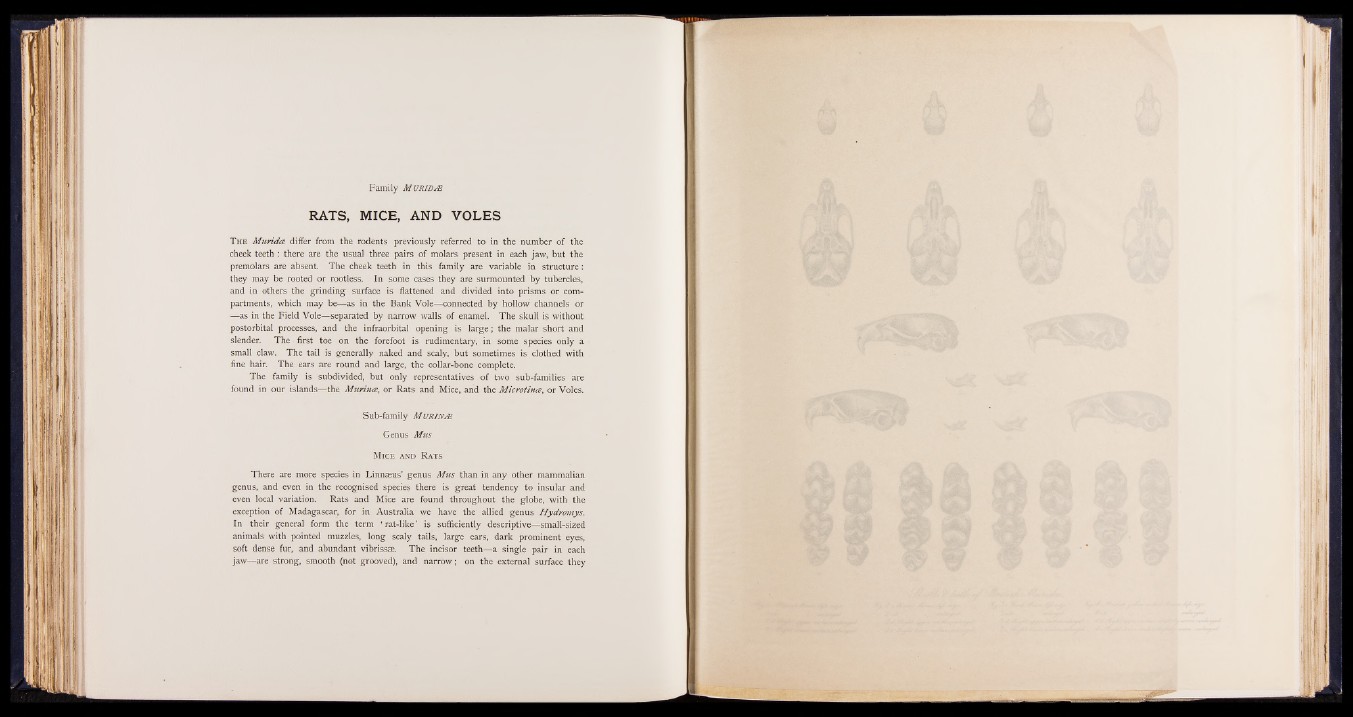
Family UURIDAi
RATS, MICE, AND VOLES
T he Muridce differ from the rodents previously referred to in the number of the
cheek teeth: there are the usual three pairs of molars present in each jaw, but the
premolars are absent. The cheek teeth in this family are variable in structure:
they may be rooted or rootless. In some cases they are surmounted by tubercles,
and in others the grinding surface is flattened and divided into prisms or compartments,
which may be—as in the Bank Vole—connected by hollow channels or
—as in the Field Vole—separated by narrow walls of enamel. The skull is without
postorbital processes, and the infraorbital opening is large; the malar short and
slender. The first toe on the forefoot is rudimentary, in some species only a
small claw. The tail is generally naked and scaly, but sometimes is clothed with
fine hair. The ears are round and large, the collar-bone complete.
The family is subdivided, but only representatives of two sub-families are
found in our islands—the Murince, or Rats and Mice, and the Microtince, or Voles.
Sub-family M u r in ^E
Genus Mus
Mice and R ats
There are more species in Linnaeus’ genus Mus than in any other mammalian
genus, and even in the recognised species there is great tendency to insular and
even local variation. Rats and Mice are found throughout the globe, with the
exception of Madagascar, for in Australia we have the allied genus Hydromys.
In their general form the term ‘ rat-like’ is sufficiently descriptive—small-sized
animals with pointed muzzles, long scaly tails, large ears, dark prominent eyes,
soft dense fur, and abundant vibrissae. The incisor teeth—a single pair in each
jaw—are strong, smooth (not grooved), and narrow; on the external surface they